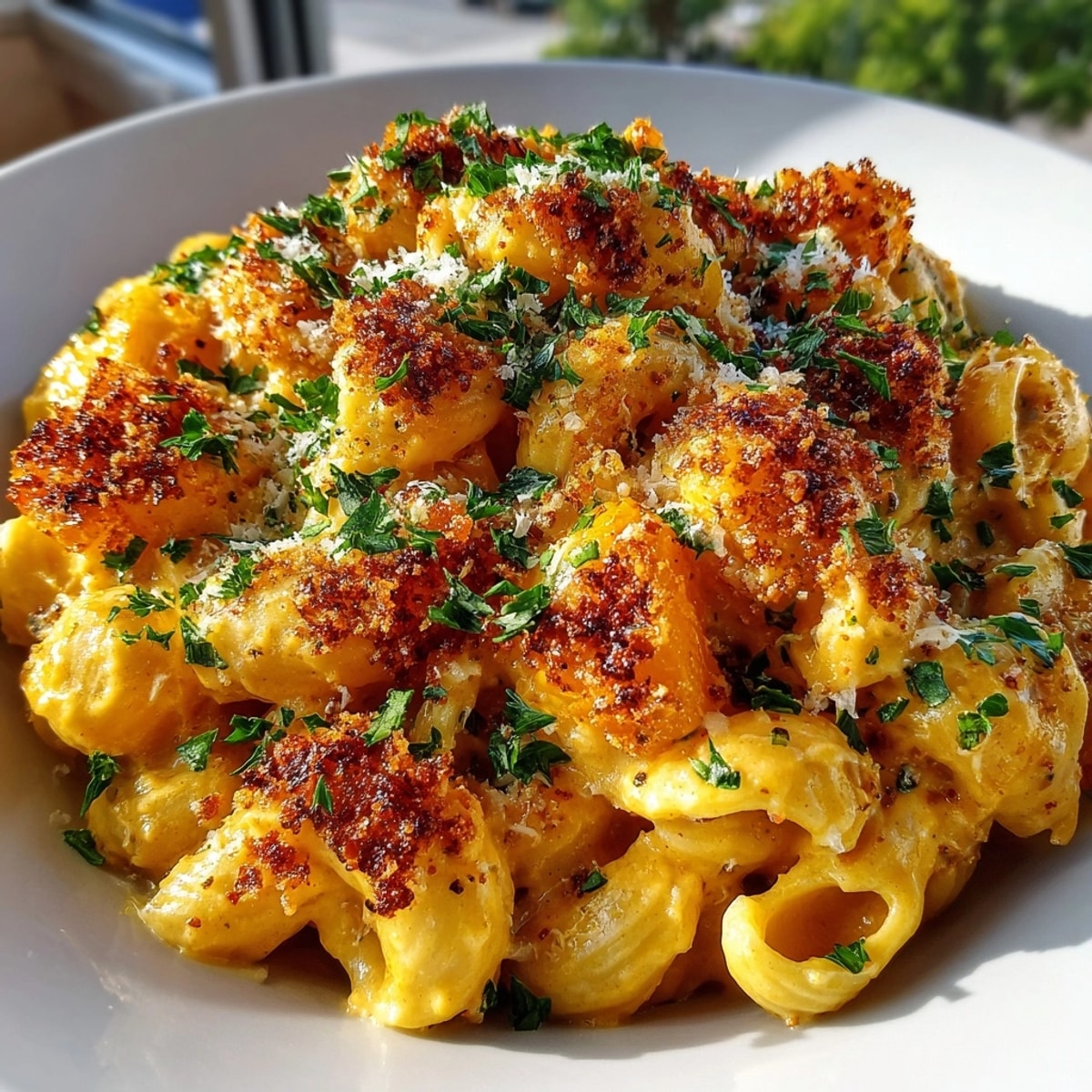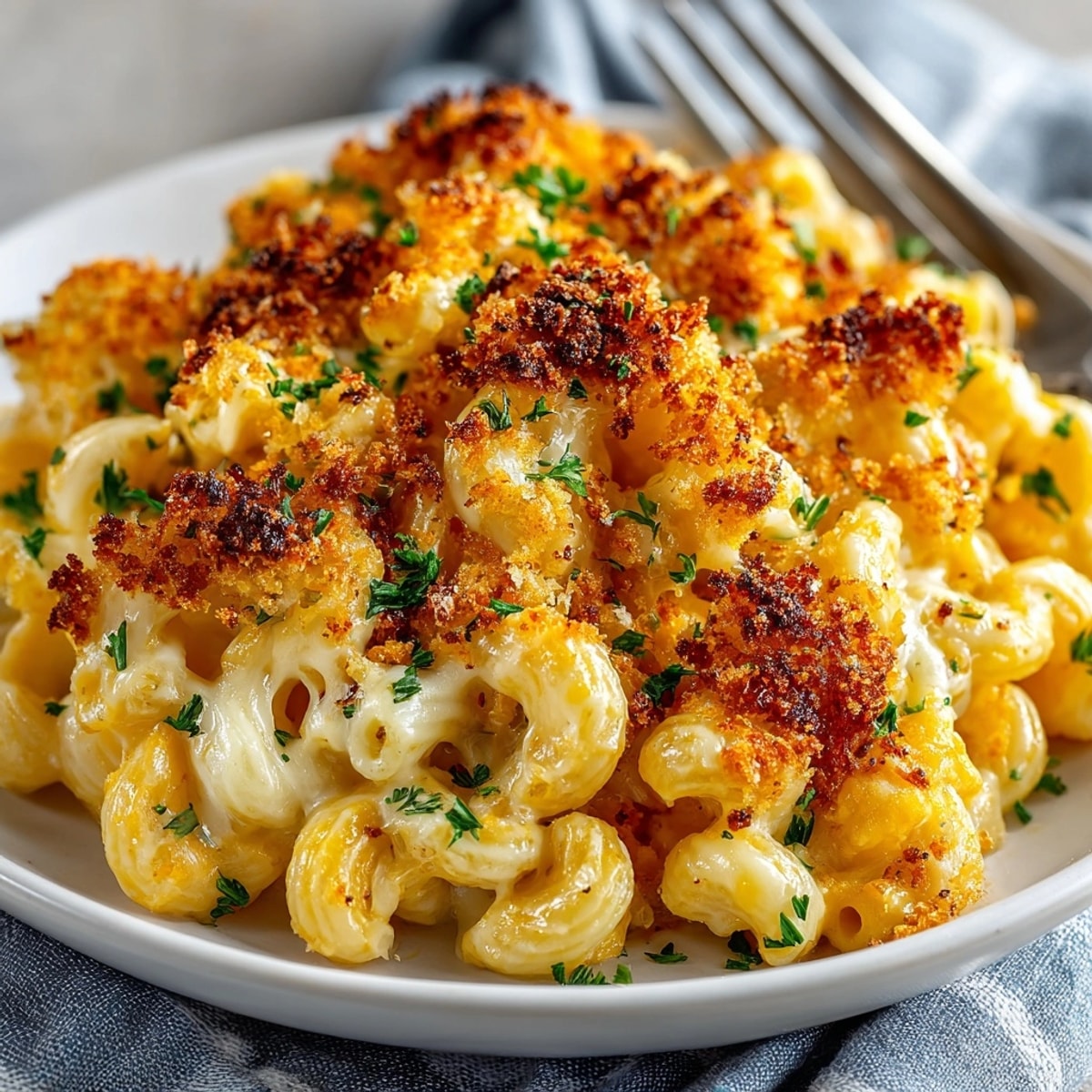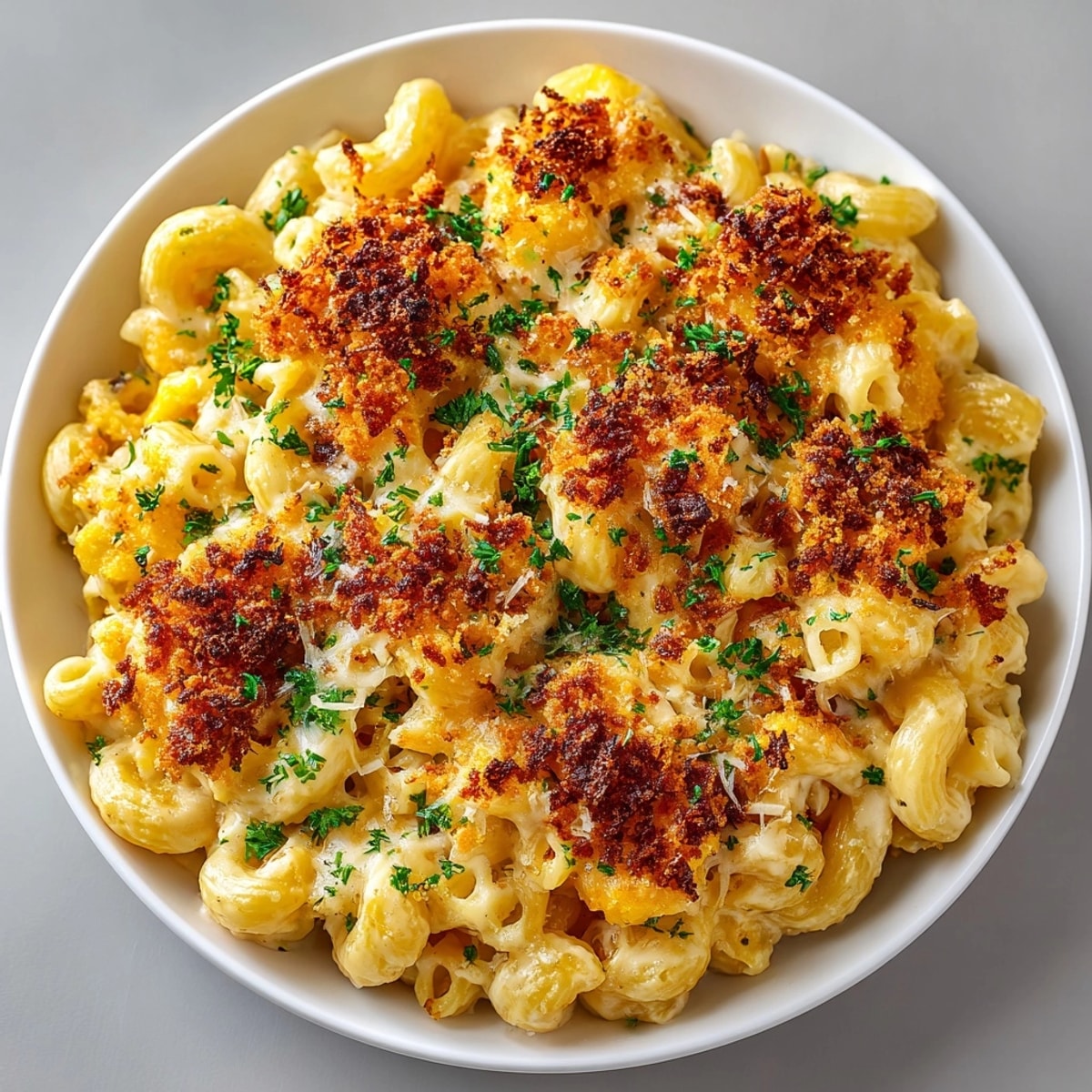 Pin
Pin This cozy butternut squash mac and cheese transforms ordinary pasta into a fall comfort food masterpiece. The natural sweetness of roasted butternut squash creates a velvety sauce that wraps around each pasta piece, delivering rich autumn flavor in every bite. Perfect for weeknight dinners when you crave something hearty yet sophisticated.
I first created this recipe when trying to sneak more vegetables into my picky eater's diet. The vibrant orange color intrigued my daughter enough to try it, and she's been requesting "orange mac and cheese" ever since. It's become our Friday night tradition during the fall months.
Ingredients
- Butternut squash: provides natural sweetness and creates the silky base for our sauce. Look for one that feels heavy for its size with firm, unblemished skin.
- Yellow onion: adds savory depth when roasted alongside the squash. Choose one with tight, papery skin and no soft spots.
- Garlic cloves: infuse the sauce with aromatic flavor. Select firm bulbs with no green sprouts.
- Elbow macaroni or small pasta shells: catch the sauce in their crevices. Quality bronze-die pasta works best.
- Unsalted butter: gives you complete control over the salt content in your final dish.
- All-purpose flour: works with butter to create the roux that thickens our sauce.
- Whole milk: creates the perfect creamy consistency. The fat content matters here for richness.
- Sharp cheddar cheese: provides the classic mac and cheese flavor. Freshly grated melts much better than pre-shredded.
- Gruyère cheese: adds nutty complexity and incredible meltability. Worth the splurge.
- Parmesan cheese: brings salty umami notes that balance the squash's sweetness.
- Seasonings: include salt, pepper, nutmeg, and optional thyme. Freshly grated nutmeg makes a noticeable difference.
- Panko breadcrumbs: create that irresistible crispy topping. Japanese panko stays crunchier than regular breadcrumbs.
Instructions
- Roast the vegetables:
- Preheat your oven to 400°F. Toss butternut squash cubes and diced onion with olive oil, salt and pepper on a parchment-lined baking sheet. Spread them in a single layer, ensuring pieces aren't overcrowded. Roast for a full 25-30 minutes until the edges caramelize slightly. This caramelization concentrates the natural sugars and creates deeper flavor.
- Cook the pasta:
- While vegetables roast, bring a large pot of water to a rolling boil. Add a generous tablespoon of salt to the water before adding pasta. Cook pasta just until al dente, about 1-2 minutes less than package directions. The pasta will continue cooking in the oven, so slightly undercooking prevents mushiness. Reserve a cup of pasta water before draining in case you need to thin the sauce later.
- Blend the squash mixture:
- Transfer your roasted vegetables to a blender while still warm. Add minced garlic raw at this stage so it gets partially cooked by the residual heat without becoming bitter. Pour in 1/2 cup of milk to help create a smooth puree. Blend until completely smooth, stopping to scrape down sides if needed. The mixture should be velvety with no visible chunks.
- Create the base sauce:
- In a large saucepan over medium heat, melt butter until foaming subsides. Sprinkle flour over melted butter and whisk continuously for a full minute. This cooks out the raw flour taste while forming your roux. Gradually add remaining milk in a steady stream, whisking constantly to prevent lumps. Continue cooking and stirring until the sauce thickens enough to coat the back of a spoon.
- Combine sauce components:
- Reduce heat to low before stirring in your butternut squash puree. Add nutmeg, thyme if using, salt and pepper. The sauce will be thick and vibrant orange. Taste and adjust seasonings as needed. The natural sweetness of the squash should be balanced by the savory elements.
- Add the cheese:
- With heat still on low, add cheeses one handful at a time, stirring until completely melted before adding more. This prevents the sauce from becoming grainy. The combination of sharp cheddar, nutty Gruyère and salty Parmesan creates a perfectly balanced flavor profile that complements the squash beautifully.
- Combine with pasta:
- Fold cooked pasta into the sauce, ensuring each piece gets thoroughly coated. If the mixture seems too thick, add a splash of reserved pasta water to reach your desired consistency. The starch in the pasta water helps maintain the silky texture of your sauce.
- Prepare for baking:
- Transfer the mac and cheese to a lightly greased baking dish, spreading it in an even layer. Mix panko breadcrumbs with melted butter in a small bowl until evenly moistened, then sprinkle this mixture over the top. The butter helps the breadcrumbs turn golden and crispy during baking.
- Bake to perfection:
- Bake at 400°F for 10-15 minutes until the edges bubble and the top turns golden brown. Watch carefully in the final minutes to prevent burning the breadcrumb topping. Let stand for 5 minutes before serving to allow the sauce to set slightly.
 Pin
Pin The nutmeg in this recipe is my secret weapon. It has a natural affinity for both butternut squash and cheese sauces, creating a subtle warmth that guests can never quite identify but always love. My grandmother taught me this trick years ago, and I've never made mac and cheese without it since. Just remember that freshly grated nutmeg makes a world of difference compared to the pre-ground variety.
Make-Ahead Instructions
This butternut squash mac and cheese is perfect for meal prep. You can prepare the entire dish up to the baking stage, cover tightly with foil, and refrigerate for up to 2 days. When ready to serve, simply remove from the refrigerator 30 minutes before baking to take the chill off, then bake as directed, adding about 10 extra minutes to the cooking time. The breadcrumb topping is best added just before baking to maintain maximum crispness.
Ingredient Substitutions
If butternut squash isn't available, sweet potato makes an excellent substitute with a similar texture and sweetness. For a lighter version, replace half the whole milk with chicken or vegetable broth. The cheese blend is customizable too. While I love the combination suggested, fontina creates wonderful creaminess, and smoked gouda adds an intriguing depth of flavor. For those avoiding gluten, gluten-free pasta and a 1:1 gluten-free flour blend work perfectly in this recipe.
Serving Suggestions
This mac and cheese shines as a main dish paired with a simple arugula salad dressed with lemon vinaigrette. The peppery greens and bright acidity balance the richness perfectly. For a more substantial meal, serve alongside roasted Brussels sprouts or a rotisserie chicken. During fall gatherings, this makes a stunning side dish alongside roasted turkey or ham. For an elegant presentation, portion into individual ramekins before adding the breadcrumb topping and baking.
Seasonal Adaptations
Fall version uses sage instead of thyme and adds toasted walnuts to the breadcrumb topping. Winter adaptation incorporates caramelized leeks and a pinch of cloves. Spring variation includes blanched asparagus pieces folded in before baking.
Success Stories
When I brought this dish to my neighborhood potluck last Thanksgiving, three different people asked for the recipe before the night was over. The most satisfying moment was watching a friend's toddler who "hates vegetables" devour two servings without knowing he was eating squash. My vegetarian sister-in-law now requests this as her birthday dinner every year, paired with a glass of oaky chardonnay.
 Pin
Pin Years of making this dish have taught me a few secrets. Follow these tips for the best flavor and texture.
Recipe FAQ
- → What makes butternut squash a good addition to mac and cheese?
Butternut squash offers natural creaminess and a touch of sweetness, adding depth to the sauce while increasing nutrition.
- → Can I use a different type of pasta?
Yes, any short pasta shape works well, such as shells, penne, or fusilli, to hold the creamy sauce.
- → How can I make this dish gluten-free?
Substitute both the pasta and breadcrumbs with gluten-free versions for the same rich, satisfying texture.
- → Are there suitable cheese alternatives?
You can use fontina or mozzarella instead of Gruyère, or opt for all cheddar for a milder flavor profile.
- → How do I store and reheat leftovers?
Store in an airtight container in the fridge for up to 3 days. Reheat covered in the oven or microwave until warmed through.
- → Can this be made ahead?
Yes, assemble ahead without the topping; refrigerate, then add breadcrumbs and bake when ready to serve.